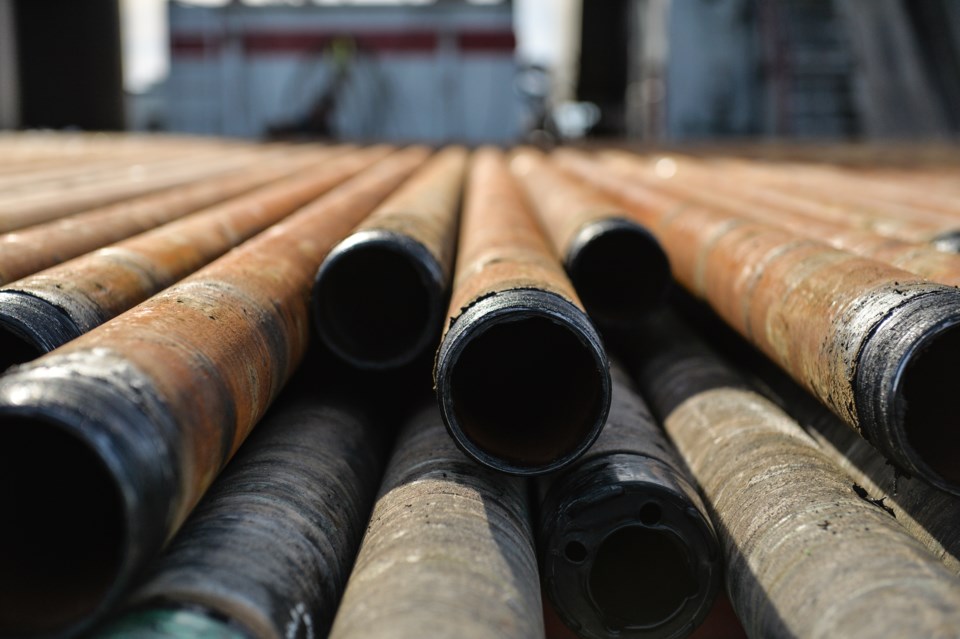On Oct. 31 the Petroleum Services Association of Canada (PSAC) released its 2018 Canadian Drilling Activity Forecast in Calgary. PSAC expects a total of 7,900 wells (rig releases) to be drilled in Canada in 2018. For 2017, the association’s final revised forecast predicts a yearly total of 7,550 wells.
PSAC bases its 2018 forecast on average natural gas prices of C$2.50 per mcf (AECO), crude oil prices of US$53 per barrel (WTI), and the Canadian dollar averaging US$0.82.
PSAC president Mark Salkeld said, “The small uptick in activity we realized in Q1 of 2017 has carried on through the year. Budgets set with initial optimism for a gradual climb in prices by year-end continue with their plans as drilling and completion efficiencies improve. Due to pressure to stay low, costs for services continue to be suppressed affording better margins for producers. For 2018, confidence that oil will stay in the low-to-mid US$50 range as markets tighten and inventories reduce, along with growing interest in Canada’s vast liquids rich natural gas, should support a 4 – 5 per cent increase in activity levels.”
On a provincial basis for 2018, PSAC estimates 3,998 wells to be drilled in Alberta, and 2,931 wells for Saskatchewan, year-over-year increases of 152 and 84 wells, respectively. At 230 wells, drilling activity in Manitoba is expected to remain constant year-over-year whilst activity in British Columbia is projected to increase from 612 wells in 2017 to 730 wells in 2018.
Although the Association expected 2018’s activity to be better than 2015, 2016 or 2017, the projected total of 7,900 wells is still 30 per cent lower than the number of wells drilled in 2014.
Salkeld continued, “The cancellation of TransCanada’s Energy East pipeline is another blow to investor confidence in Canada and so PSAC will continue to advocate hard for market access and a competitive environment. The world’s energy needs are growing and polls show that countries would prefer Canadian oil and gas that is responsibly-developed and working to reduce carbon emissions through innovation. Market access and development of our natural resources would not only help reduce global emissions and help lift third-world countries out of energy poverty, but would continue to benefit Canadians, too, by providing energy security, LNG for remote and northern communities, great high-tech jobs and world prices for our resources so that they can continue to provide economic benefits to all Canadians.”
Digging into the details, the forecast predicts Saskatchewan will see 2,879 oil wells, nine dry wells, and 43 service wells for a total of 2,931. Notably, there is are no gas wells expected this year at all. In 2003, there were 2,113 gas wells completed in Saskatchewan, according to the Ministry of Economy.
Broken down, southeast Saskatchewan had 751 oil wells, nine dry wells and five service wells. Northwest Saskatchewan (north of Kerrobert) is expected to see 462 oil wells and 26 service wells. С����Ƶwest Saskatchewan, including the Kindersley area, is expected to have 166 oil wells and 12 service wells.
Spud-to-release days for rigs has remained consistent for the last three years in southeast Saskatchewan at eight days. But northwest Saskatchewan has seen a substantial decline, from five days in 2015 Q3 to four days in 2016 Q3 and three days in 2015 Q3.
Operating days in Saskatchewan are expected to be up slightly in 2018, at 13,486 days. The forecast for 2017, rounding out the end of the year, is 13,101. That is a big improvement from 2016, which posted just 7,549 operating days.
For 2017 up until Oct. 31, the top ten drillers in southeast Saskatchewan saw 285 wells drilled by Crescent Point Energy Corp., 80 by Spartan Energy Corp. 27 by Torc Oil & Gas Ltd., 17 by Astra Oil Corp, 16 by Ridgeback Resources Inc., 13 by Ridgeback Resources Corp, 13 by Villanova 4 Oil Corp., 12 by Pemoco Ltd., 11 by Steppe Petroleum Inc. and a tie for 10th positions, with Midale Petroleums Ltd. and Vermillion Energy Inc. each having 10 wells.




